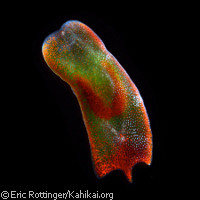Worms provide insight into early evolution of animals
A detailed genetic analysis of flatworms has allowed an international team of scientists to shed new light on the early evolution of animals. The study is published in the journal Proceedings of the Royal Society B. Bilateral animals, as their name suggests, have a bilaterally symmetrical body plan. Humans fall into this immense group, as do fish, insects and worms, to name a few. However, for many years, taxonomists have struggled to work out where the short, simple flatworms forming the Acoelomorpha group belong within the bilateral group (or 'bilaterians'). The Acoelomorpha group has been described as a 'rogue animal' by Professor Casey Dunn of Brown University in the US: 'It has been wandering throughout the animal tree of life.' There are around 350 species of Acoelomorpha, and earlier attempts to classify them using genetic data have had contradictory results. In this latest study, scientists from France, Germany, Spain, Sweden, the UK and the US used a new genetic sequencing technique that enabled them to analyse over 1,400 genes in many animals, 10 times more genes than in earlier studies. The team logged 2.25 million processor hours on a Californian supercomputer to get their results. The detailed analysis revealed that the Acoelomorpha is in fact a sister group to all other bilateral animals. According to the researchers, this is important because it shows that the worms are the result of the first evolutionary split in the bilaterians. The findings also provide fresh information on the as yet unidentified common ancestor of all bilaterians. Professor Dunn said that the work is 'as distant as an animal can be in bilateria and still be a bilaterian. So, now we have two perspectives to (find out about) this common ancestor, the acoelomorphs and all other bilateral animals.' The team also clarified the place in the tree of life of two other animals. Xenoturbella is a type of marine worm, which has been classified variously as a worm and a mollusc over the years. The detailed genetic analysis reveals that it is probably not part of the Deuterostomia (a major subgroup of the bilaterians which includes vertebrates, sea stars and some other groups). In fact, it appears to be a close relative of the Acoelomorpha. The team also found a taxonomic home for a group of curious creatures called Cycliophora, which lives on the bristles around the mouth of the Norway lobster and has never been included in a phylogenetic study before. Cycliophora are now classified alongside the Entoprocta (small, aquatic animals) and the Ectoprocta (marine creatures which group together in colonies).



